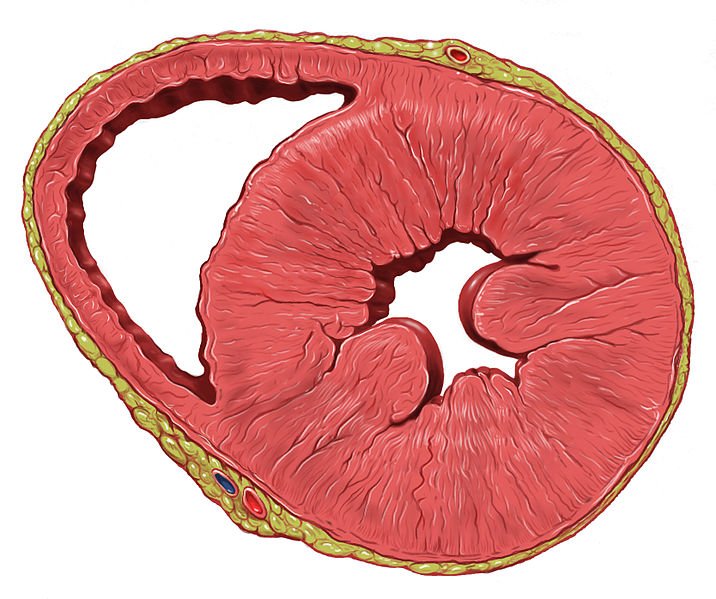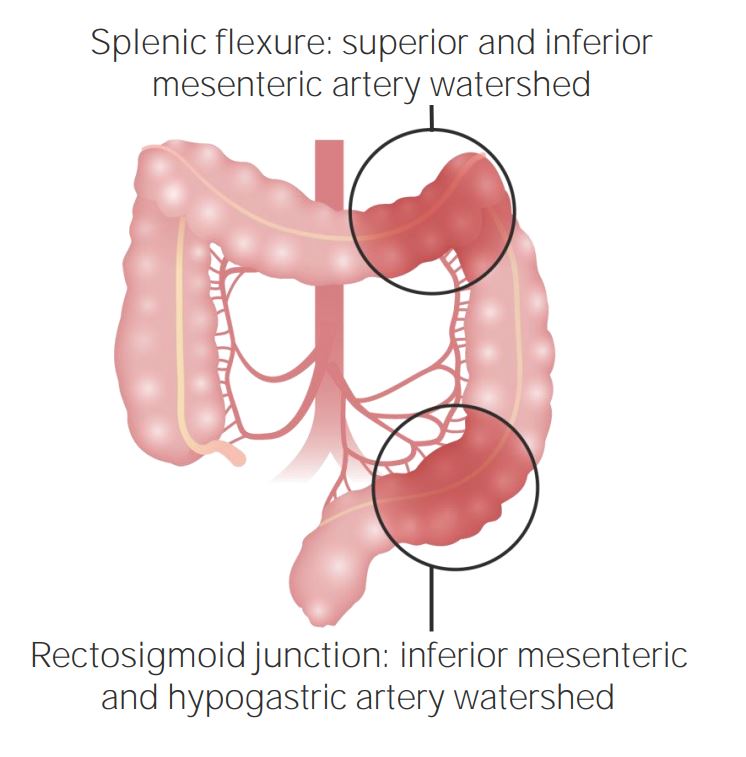Playlist
Show Playlist
Hide Playlist
Subcellular Responses to Injury: Heat Shock Proteins
-
Slides Cellular Pathology Adaptation to Injury.pdf
-
Reference List Pathology.pdf
-
Download Lecture Overview
00:01 Let's get it down inside the cell there. 00:03 So there we talked about things that are kind of at the tissue level. 00:06 Atrophy, hypertrophy, hyperplasia, metaplasia, talked about the mechanisms, but I'm talk more specifically about what things can happen at the subcellular level in response to various injury. 00:17 So we've already talked about one, that's autophagy. 00:20 I stress a cell cut off its nutrient supply and it will start to eat itself. 00:25 It will undergo autophagy. 00:28 I can also dumped on, say for example, I give the liver a lot of phenobarbital, for whatever reason, it's a sedative, and the patient is taking more.. 00:40 Taking a certain level of that. 00:42 With time, the patient becomes relatively refractory to the effect of that dose of phenobarbital and that's because the drug is inducing more and more production of smooth endoplasmic reticulum to metabolize that drug. 00:56 So I've gotten hypertrophy, more smooth ER that's occurring because of the drug that increased amount of smooth ER means there's more cytochrome p450 means there's more degradation, which means that the longer I take phenobarbital, the less sensitive I am to it. 01:14 So that's a subset of response to a particular injury. 01:19 You can also have cytoskeletal changes. 01:20 This is just an example of something that's fairly common with heavy alcohol ingestion. 01:27 This is now a cross-linking and an abnormal form of intracellular keratin. 01:32 So those intermediate filaments, and in alcoholics and other patients who have injury, where we are now cross-linking the proteins we get cytoskeletal aberrations. 01:45 This is called Mallory's alcoholic hyaline. 01:47 It's that bright pink material and it's cross-linked cytoskeleton. 01:52 It's cross-linked intermediate filaments, so you can get cytoskeletal changes and clearly when I'm doing that a cytoskeleton is not working appropriately but it is a response to injury subcellularly, and then finally, we're going to spend the next couple slides talking about heat shock proteins. 02:11 So heat shock proteins, they are called heat shock proteins because they were first seen in fruit flies of all things. 02:18 When they raise the temperature just 5 degrees centigrade, the response of the flies to that raise in temperature made a whole bunch of new proteins and it turns out that there are homologs to those proteins in all of us, and they've actually fundamentally do a very important job in protein folding. 02:38 So we'll talk about that. 02:39 So heat shock proteins. 02:40 That's why they're called heat shock proteins. 02:42 So let's look. 02:44 We have new peptide synthesis. So we have our messenger RNA. 02:47 We've got a ribosome sitting there and we have a new peptide coming off. 02:50 Well, how does it know how to fold into exactly the right configuration? And actually it may be that you don't want it to fold until the very end until the entire thing is synthesized. 03:01 So what we do is as we are synthesizing this new nascent chain of polypeptide and it's growing, we interact with chaperones. 03:10 Cytosol like proteins that can hold a protein in a particular configuration. 03:17 And then when the time comes, they can fold it appropriately. 03:21 So some chaperones, are used to move proteins that are synthesized in the cytosol into other organelles, for example, the mitochondria. 03:30 Remember that only about 13 of the electron transport chain proteins involved in ATP synthesis are actually made by the mitochondria and the other thousand and seventy five or so are made in the nucleus or are transcribed to messenger RNA in the nucleus and synthesized in the cytosol. 03:47 We got to get them in somehow. 03:49 We have mitochondrial chaperones that are able to take an unfolded protein, not yet folded, squirrel it across through pours into the mitochondria and then we had can have mitochondrial chaperones that fold it to the appropriate file configuration. 04:06 So we can have a mitochondrial chaperone. 04:08 We can have things chaperones that help a protein become its final mature folded configuration. 04:16 And we can have things that are somewhere in between that sit on and unfolded protein and keep it unfolded until the very end. 04:27 So we have various chaperones. 04:29 There are several different members of this particular family that can do all these kind of wonderful things making sure that we get proteins to the right configuration in to the right place. 04:40 Okay, so that's kind of one job. That's their day job. 04:43 There's a night job. 04:44 Because proteins are constantly being denatured, because of ultraviolet light or heat or free radical injury, all those things that we've talked about in terms of forms of injury, and we take a nicely folded protein and it may become partially unfolded. 05:00 Well, we can do a couple things at that point. 05:02 We can just give up the ghost and say.. 05:05 I have too many unfolded proteins. 05:06 I guess I'll die. 05:08 Well, that's fine and that can happen if we exceed the capacity to do repair but in most cases, when it's low level, we have chaperones that take that denature protein unfold it, refold it and get the right configuration at the end. 05:22 Magical. 05:23 Again, if we think about this at a molecular level, how does it know that it's misfolded to begin with and how does it know what is the right configuration? Those are many steps that we haven't yet worked out but interesting projects to work on. 05:37 The other thing is well, okay, I wasn't able to get it refolded correctly. 05:42 Oh well, but I don't want that thing lying around either because that's that's not a good thing. 05:47 I need to degrade it. 05:49 So, it turns out ubiquitin is in fact a form of a heat shock protein and you have a little green balls there on a denatured misfolded protein and we just say, let's degrade it. 06:01 Ubiquitin targets it for degradation in the proteasome. 06:04 We get peptides back out turning into amino acids. 06:07 And we can start over from scratch. 06:09 So chaperones, fold things appropriately the first time but also help to do repair if we've had injury, after we've already synthesized the protein. 06:21 So, heat shock proteins, go up when their stress, so in fruit flies, it went up when we heated them up, but it also happens with any kind of injury to a cell, we will see increased heat shock proteins. 06:35 So if we see a lot of denature proteins and we mechanisms to recognize that, we will increase the production of those proteins and see if we can't rectify the damage. 06:46 So, in that very short period of time, we've talked about the ways, kind of the really cool ways that cells can adapt to injury without dying.
About the Lecture
The lecture Subcellular Responses to Injury: Heat Shock Proteins by Richard Mitchell, MD, PhD is from the course Cellular Injury.
Included Quiz Questions
Which of the following findings are classically found in the hepatocytes of people suffering from alcoholic liver disease?
- Damaged intermediate filaments
- Copper accumulation within the hepatocytes
- Melanin deposition within the hepatocytes
- Atrophy of the smooth endoplasmic reticulum
- Hypertrophy of the rough endoplasmic reticulum
Which of the following is a function of heat shock proteins?
- Refolding of denatured proteins.
- Initiation of the apoptosis cascade
- Release of calcium ions from the mitochondria
- Defense against oxygen free radicals
- Recycling damaged organelles
Which of the following causes the upregulation of heat shock proteins?
- Ultraviolet light
- Sodium ions
- Glucose
- Adenosine triphosphate
- Potassium ions
Customer reviews
5,0 of 5 stars
| 5 Stars |
|
1 |
| 4 Stars |
|
0 |
| 3 Stars |
|
0 |
| 2 Stars |
|
0 |
| 1 Star |
|
0 |
I can't believe how simple he makes this topic to Understand






